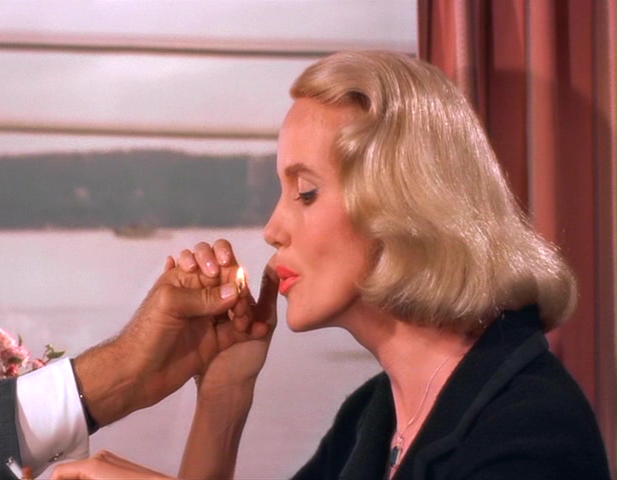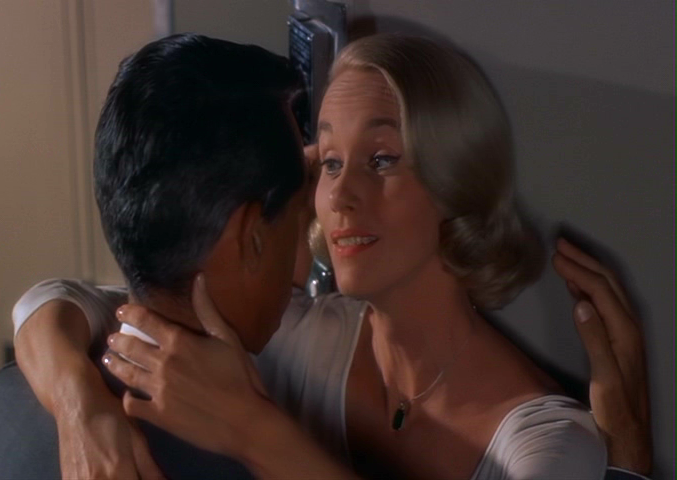
Sex and Death

One particularly fascinating aspect of the film’s oedipal narrative is the degree to which Eve and Thornhill’s relationship is predicated on sex and death (North by Northwest’s narrative device representing castration). Herrmann called the overture “a kaleidoscopic orchestral fandango designed to kick off the exciting rout which follows…the crazy dance about to take place between Cary Grant and the world” [10]. The opening credit sequence supports this assertion. But, as already noted, the fandango’s various appearances suggest that it might better be understood as Grant’s dance with death. On the other hand, Herrmann’s overture is not the only aspect of the score that is associated with the film’s oedipal narrative. Herrmann’s love theme and Hitchcock’s corresponding visuals unite these two themes, bringing them into line with the oedipal narrative.
 |
|
|
 |
Consider the love theme's eight appearances:
Herrmann and Hitchcock’s masterstroke occurs in the final scenes when the overture and the love theme come together with the visuals to create the ultimate metaphor for the union of sex and death. Thornhill and Eve are being chased across the face of Mount Rushmore by Leonard and Valerian. The fandango builds relentlessly, simulating the effect of a building orgasm. As Thornhill and Valerian struggle, Eve is attacked by Leonard and nearly falls to her death. The fandango gives way to a series of stinger chords as Thornhill attempts to hold on while Leonard’s foot is pressed on his hand. Suddenly, Leonard is shot and sent plummeting to his doom. The music begins to build again, recommencing the simulated orgasm. Then, a harp and jump cut to Thornhill and Eve on the train announce the return of the love theme which builds orgasmically, eventually incorporating the overture’s timpanis following a cut to a train entering a tunnel. Hitchcock claims that this phallic image is the only symbolism he employs in the film [14]. This clearly not the case. But, his desire to draw attention to this image is fitting as the phallic visuals collide with the music, creating a multi-faceted depiction of le petit mort, the final association of sex and deth, and the resolution of the oedipal conflict. Thornhill has internalized the morality of the professor, growing out of his oedipal complex. Tthe train enters the tunnel, and the development of the superego is complete.